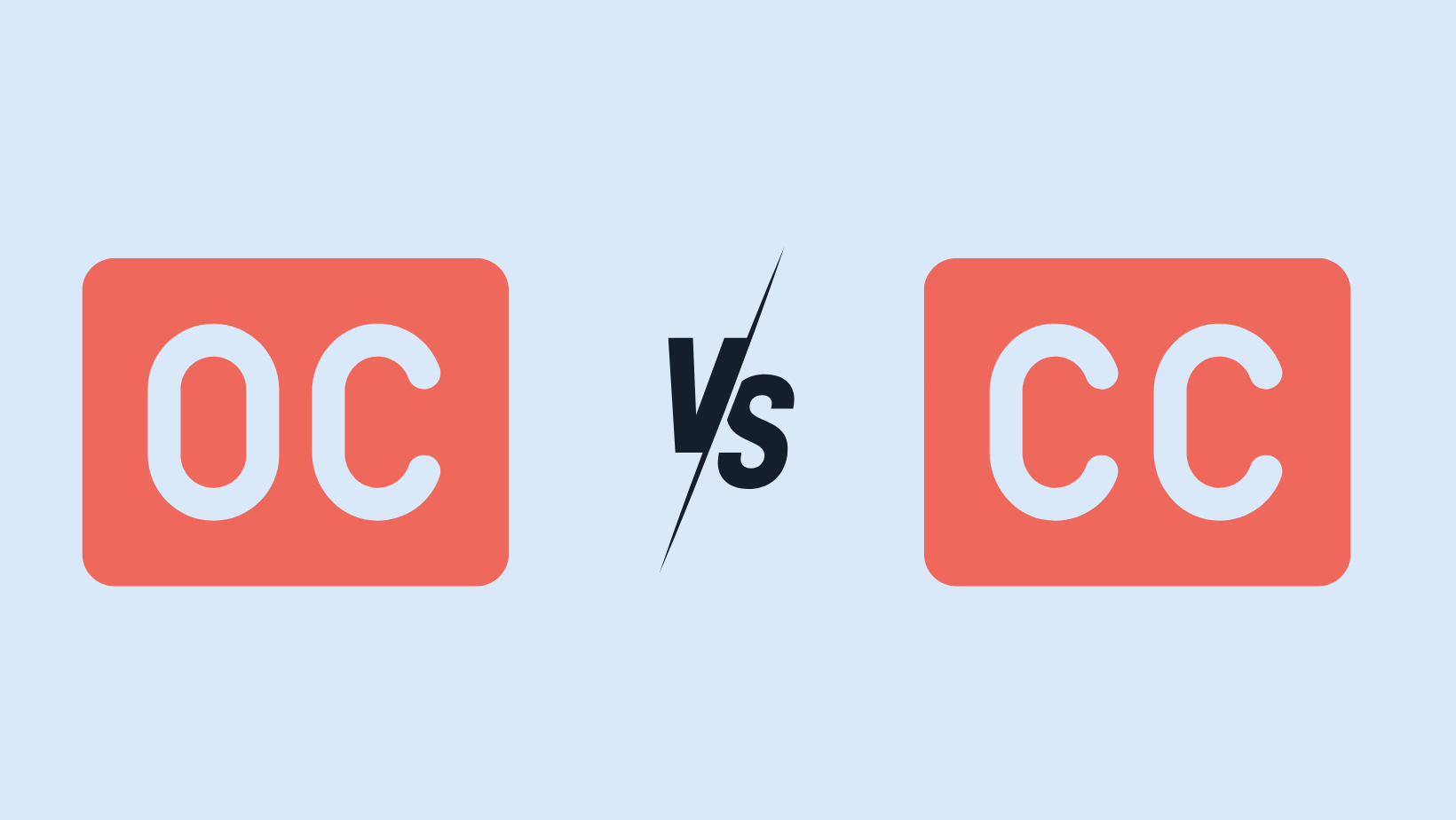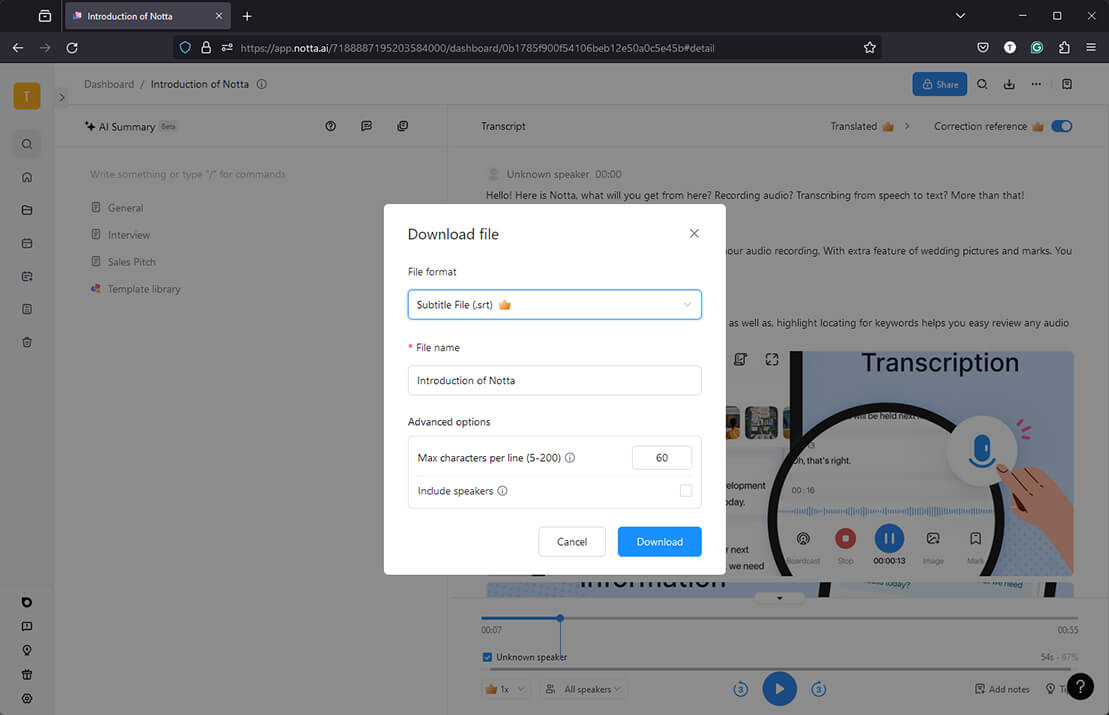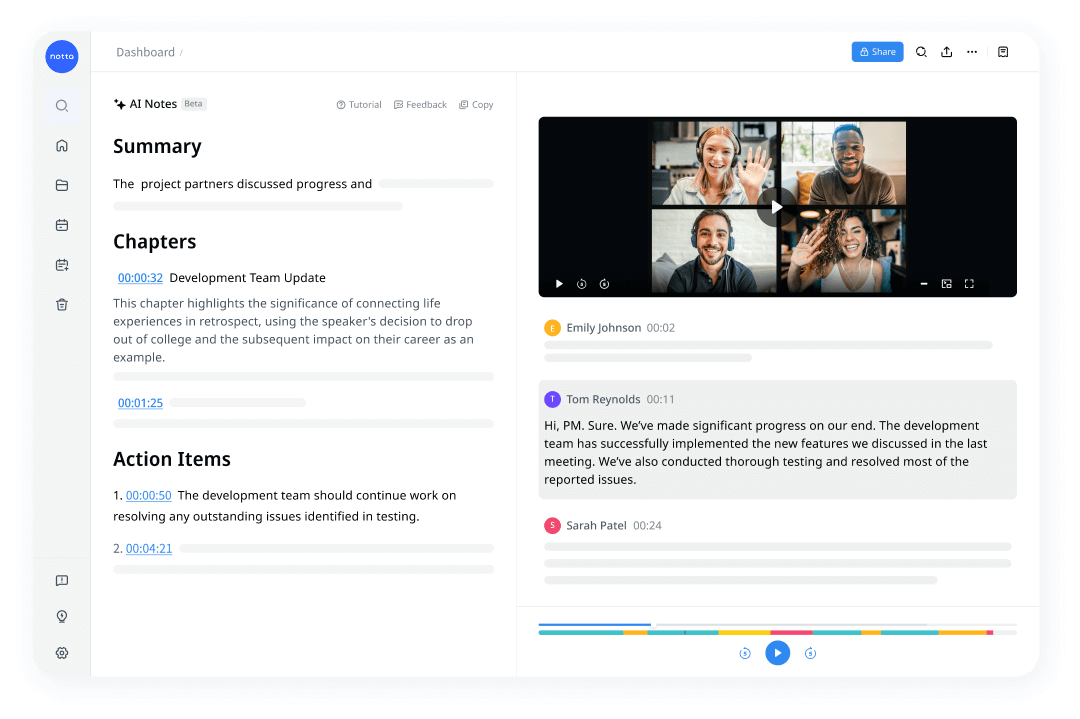
Open Captions vs. Closed Captions: What's the Difference?
98% accurate, real-time transcription in just a few clicks. 58 languages and multiple platforms supported.
Captions are becoming one of the most popular tools for content creators who want to improve video accessibility and boost audience engagement. Unfortunately, some video platforms do not use captioning terms correctly. As a result, many creators are unsure which type of captions to use in their videos.
In this post, I'll explain the basic differences between open and closed captions, highlight the pros and cons of each, and discuss when you should use open captions vs closed captions in your video content.
Main differences between open and closed captions
Here's a quick overview of the key distinctions between open captions and closed captions.
| Feature | Open Captions | Closed Captions |
|---|---|---|
| Always visible | Yes | No |
| Use a separate caption file | No | Yes |
| Easy to edit | No | Yes |
| Adjust text formatting while viewing | No | Yes |
| Viewer can select language | No | Yes |
| Boost search engine indexing | No | Yes |
What are open captions?
Open captions are text transcriptions of all the speech and relevant non-speech sounds within a video, such as musical and sound effect information cues. They become a permanent part of each frame in the video file, and the viewer cannot disable or alter them.
Open captions were originally designed as an accessibility feature for hearing-impaired viewers, but they are now growing popular among other audiences. They are sometimes known as 'burned-in' captions or 'hard-coded' captions, but all these terms refer to the same process.
Open captions are the best choice for online video sharing. They allow hearing-impaired viewers to enjoy your content, as well as viewers who prefer to view your content with the sound turned off. However, open captions do not work well for global audiences because your viewers cannot change the caption text to match their native language.
Pros of open captions
They are always visible. During the production process, open captions become a permanent part of each video frame, so they never have display issues.
They don't need input from the viewer. Because open captions are always visible, the viewer does not need to enable them or configure the display text style.
The creator has full control. The video creator has full control over the content, positioning, and timing of open captions. They also determine the text formatting style.
They work on all platforms and devices. Open captions are contained within your video file, so your viewers will see your caption content on any platform or device.
Cons of open captions
They cannot be turned off. Some viewers may find open captions distracting, such as when they are transcribing a second language that the viewer already understands. Other viewers simply prefer to have more control over how they enjoy your video content.
They are more difficult to edit. Open captions become a permanent part of your finished video, so you must re-render the entire video to make any edits or adjustments. This may not be a problem for short videos, but it can be time-consuming for longer content.
The viewer cannot adjust them. The viewer cannot adjust the text formatting of open captions to match their own preferences. This can have a negative impact on the readability of your captions for some viewers.
They do not support multiple languages. Because the viewer cannot change open captions, they also can't select their preferred language. To reach multiple language markets, you must produce a different version of your video file for each language.
Notta offers multi-language, accurate transcriptions to boost your video engagement.
What are closed captions?
Closed captions share the same combination of speech transcription, speaker identification, and other audio information used in open captions, except the viewer has more control. They can customize the caption text display style to match their needs, choose which language they want to see, or turn captions off entirely.
Closed captions are also known as 'soft-coded' captions because they get added dynamically to the video during playback. They are stored in a separate file from the video, usually in the SRT file format.
If you want to reach a global audience with your videos, you should use closed captions. You create closed caption files in multiple languages to match your target markets instead of creating multiple videos. Some online video platforms, like YouTube, can automatically create closed captions for you and translate them into additional languages.
However, it's important to remember that some video platforms do not support closed captions. Using a combination of open and closed captions will help you maximize the reach of your content.
Pros of closed captions
They are easy to edit. If you need to edit your closed captions, you do not need to re-edit your entire video file. You only need to edit the caption text file, which saves video rendering time.
The viewer can customize them. Different viewers will have different reading requirements. With closed captions, your viewer decides how the caption text will appear on their screen.
They support multiple languages. Because closed captions are added to your video during playback, the viewer can select their language of choice.
They provide an SEO boost. Search engines cannot index video content, but they can index subtitle files. Closed captions are stored in a separate file, which most search engines are able to index.
Cons of closed captions
They can have display issues. Closed captions can become out of sync with your video file, resulting in confusion for the viewer. In some rare situations, the caption text display may be incorrect or even corrupted.
They require viewer interaction. To view closed captions, viewers usually have to enable the feature on their device. This can cause viewers to miss important dialog or create other issues that may cause them to abandon your content.
Some platforms do not support them. Some video platforms and devices do not support closed captions. This is becoming less common, but you should make sure that your viewers will be able to access your closed captions if they want to.
FAQs
What is an open caption in a movie theater?
An open caption in a movie theater is a text transcription of all the relevant sound information used in the movie to construct the narrative. Open captions transcribe speech, identify who is speaking, and provide text information about music and sound effects. Open captions are only used during specific movie showings intended for hearing-impaired viewers.
In most U.S. theaters, open captions appear at the bottom of the screen so they don't interfere with the visual content of the movie. This can vary from theater to theater and may also depend on the caption language.
How to create accurate closed captions?

You can create accurate closed captions by hand, but it's much simpler to use automatic transcription. Notta is a digital transcription tool that uses the latest AI speech recognition technology to generate closed captions for your videos automatically with an accuracy rate above 98%.
When you're finished creating your closed captions, you can use Notta to translate them into over 40 languages and then download them all in the popular SRT file format.
Key takeaways
Open and closed captions were designed as accessibility features for hearing-impaired users. They are now growing in popularity with other viewer groups. Open and closed captions each have their own strengths and weaknesses, so content creators should combine both formats to reach as many viewers as possible.

If you produce a lot of video content, an automatic transcription tool can help you generate accurate captions. Notta provides AI-powered video transcription with over 98% accuracy, and you can download your captions in the standard SRT file format. To help you reach new viewers around the world, Notta can also translate your captions into 42 different languages.